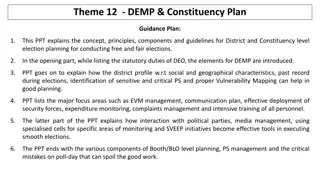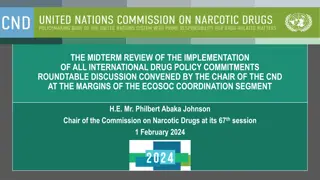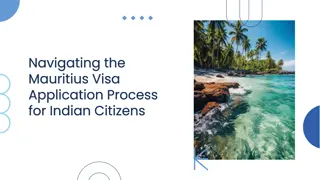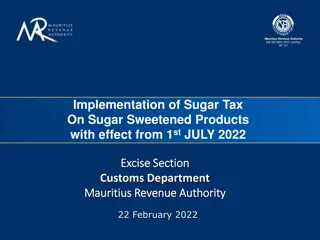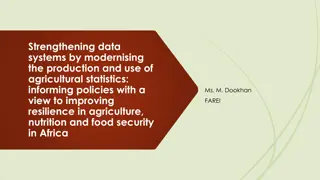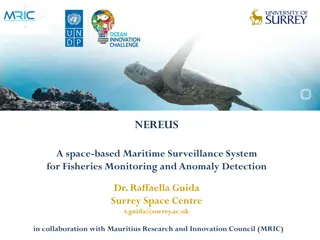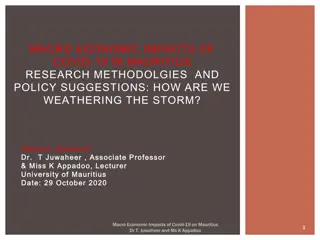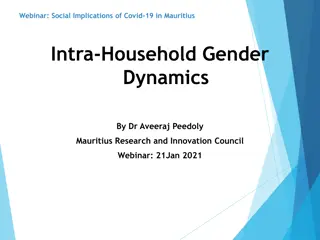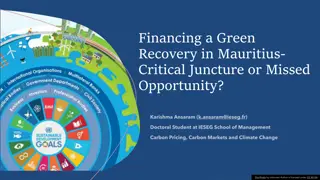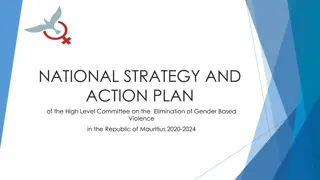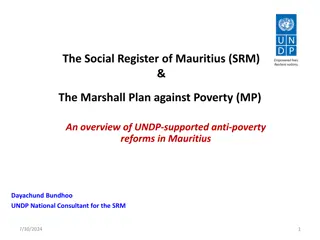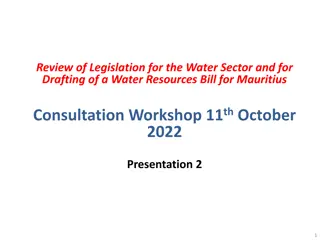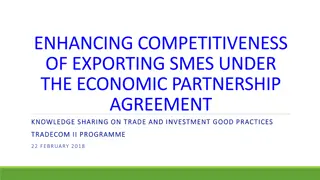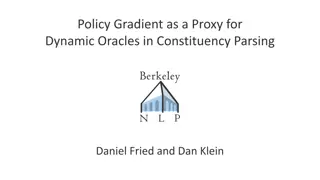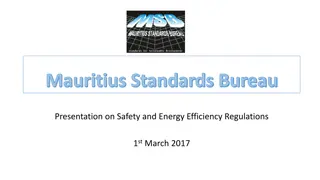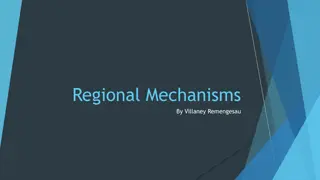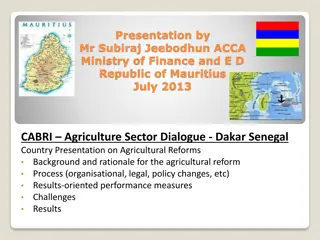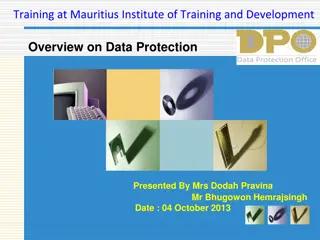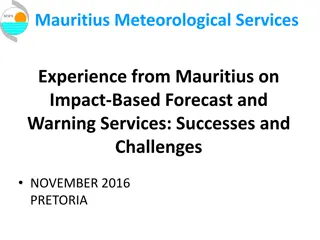Importance of Midterm Review in Mauritius Constituency Workshop
Examining the significance of the Midterm Review (MTR) in the context of a GEF-funded UNDP project in Mauritius focusing on biodiversity conservation. The MTR acts as a pivotal point for assessing project performance, catalyzing positive change, and informing stakeholders about achieved outcomes. Through a case study analysis, the operational implications, benefits, and transformative potential of the MTR are explored.
Download Presentation

Please find below an Image/Link to download the presentation.
The content on the website is provided AS IS for your information and personal use only. It may not be sold, licensed, or shared on other websites without obtaining consent from the author. Download presentation by click this link. If you encounter any issues during the download, it is possible that the publisher has removed the file from their server.
E N D
Presentation Transcript
The Importance of the Midterm Review A Case Study exercise from Mauritius Expanded Constituency Workshop
From Agencies Point of View UNDP-GEF Regional Technical Advisers often say to project teams, The Terminal Evaluation is important for the GEF to see what was achieved for their investment. The Midterm Review is important for you and for UNDP because if performance is poor, we can still turn things around. GEF-PPT-BG.png 2
Questions about the Midterm Review (MTR) 1. What makes the MTR different from other reporting requirements? Who benefits from the MTR and how? How can the MTR catalyze change in a project? What questions should be asked by the MTR? Beyond the scope of a single project, how can MTR reports be used? 2. 3. 4. 5. A case study will help us answer these questions... GEF-PPT-BG.png 3
The Management and Protection of the Endangered Marine Environment of the Republic of Mauritius GEF funded UNDP implemented Medium-Sized Project Focal area: Biodiversity GEF Strategic Priority: SP1 (Protected Areas) Total GEF Grant: US$ 1.00 million Total Co-financing: US$ 3.36 million at CEO Approval stage US$ 3.0 million effectively mobilised GEF-PPT-BG.png 4
Background Project Summary & Context (1 of 2) Project Objectives: 1) Develop an enabling policy and institutional framework for sustainable co-management of MPAs throughout the Republic; and 2) Develop innovative co-management arrangements for MPAs and adapt them at a representative demonstration site in Rodrigues. GEF-PPT-BG.png 5
Background Project Summary & Context (2 of 2) Complexities in the project: the two components were implemented by different national entities collaborative co-management was new and innovative in the country many partners were involved: Government, local communities, private sector Active management of MPAs was new to the country at project start and there were no MPAs on Rodrigues Island GEF-PPT-BG.png 6
Background Project Milestones GEF CEO Approval ProDoc Signature First disbursement Original Closing Actual Closing August 2003 January 2004 2005 June 2008 Sept 2012 GEF-PPT-BG.png 7
A Case Study from Mauritius Background Annual Disbursement Disbursements by Funding Source Peak implementation GEF-PPT-BG.png 8
Background M&E Milestones First PIR Midterm Evaluation Final PIR/Terminal Evaluation Sept 2005 June 2008 Sept 2012 Period of most intense implementation 2003 2004 2005 2006 2007 2008 2009 2010 2011 2012 Effective implementation period GEF-PPT-BG.png 9
The MTE A turning point Rated the project Marginally Unsatisfactory (MU) Revealed the reasons for delays, and solutions Provided specific and detailed recommendations Findings and recommendations were embraced by project team, UNDP, other partners Described as a turning point by the TE report GEF-PPT-BG.png 10
Notable Findings of the MTE Difficult to achieve Outcome 1 in the political, administrative, legal context (decentralisation implying new roles and mandates) Delays in implementation too early to see any real achievements under the Outcomes Lack of Technical Advisor with MPA know-how was not in the team. GEF-PPT-BG.png 11
How did the MTE catalyze the change? MTE was thorough and specific in raising flags about the project s poor performance and trends Outlined actionable and concrete recommendations Revealed ways in which the country could drive a turnaround in the project, e.g. stressed the need for political commitment These and other recommendations were immediately acted on by Government partners, UNDP and project team, bringing about major improvements in implementation GEF-PPT-BG.png 12
After the MTE... Logframe streamlined and made more results-oriented with clearer and SMART er indicators Systematic tracking of MTE management response Consolidation of key project outputs successful zoning of the MPA and its enforcement development of key MPA planning documents implementation of key activities in Component 1, which had seen no progress till the MTE. Multi-year budgetary planning enforced New Chief Technical Adviser engaged Marginally Satisfactory (MS) overall rating from TE, with some Highly Satisfactory (HS) components GEF-PPT-BG.png 13
Highlights of the Projects Results Establishment of the South-East Marine Protected Area (SEMPA) across 4,200 ha Improved management effectiveness of SEMPA Developed innovative co-management arrangements for marine PAs Increased communities sense of ownership of the MPAs; Supported the recruitment of fishermen as Field Rangers, offering an alternative livelihood Reduced pressures on marine resources; independent monitoring confirms that MPA zones are adhered to and infractions are reported and penalized GEF-PPT-BG.png 14
Questions about the Midterm Review (MTR) 1. What makes the MTR different from other reporting requirements? 2. Who benefits from the MTR and how? 3. How can the MTR catalyze change in a project? 4. What questions should be asked by the MTR? 5. Beyond the scope of a single project, how can MTR reports be used? GEF-PPT-BG.png 15
Thank you for your attention Questions? 16



